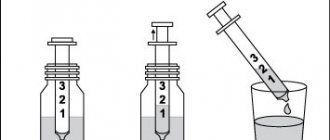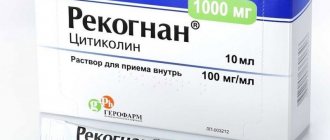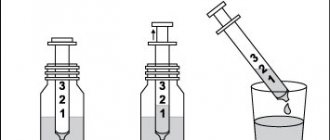What is vitamin A
Vitamins are regulators of biological processes, without which the biochemistry of the body and the functioning of organs are disrupted. Most of them come from food, and some are synthesized by the body or intestinal flora. Vitamins are divided into water-soluble and fat-soluble. The former do not stay in the body for a long time and are excreted with metabolic products, while the latter accumulate in the liver. We wrote about vitamin D - the only one that affects the body's immune defense. But C turned out to be not as useful as dietary supplement manufacturers write about it.
Vitamin A is fat soluble. A person receives it from food in the form of precursors - retinoids and carotenoids. They are contained in the fatty depot of the liver, and when needed they are converted into retinol and sent to the tissues. Vitamin A regulates embryogenesis, the functioning of reproductive organs, skin glands, inflammation, the creation of new cells and their death. A retinol derivative is one of the components of rhodopsin. This is an eye pigment responsible for color perception.
External retinoids are used in dermatology: they treat acne and are prescribed to prevent age-related skin changes. It has been proven that isotretionine prevents the enzymatic degradation of collagen, the main structural component of the skin. Vitamin A derivatives are added to sunscreens for antioxidant protection.
“Vitamin A is used externally for many dermatoses, especially those associated with impaired keratinization, sebum secretion and healing,” says Nina Sergeeva, a dermatologist at the Fantasy children’s clinic. “It accelerates the restoration of skin integrity, reduces sebum production and regulates keratinization.”
Systemic retinoids are treatments for severe acne, psoriasis, rosacea, precancerous lesions, and nonmelanoma skin cancer. They normalize the formation of cells in the upper layer of the epidermis, reduce sebum secretion and inflammation, providing long-term remission. They are prescribed in cases where external therapy is ineffective or gives temporary results.
How to understand that vitamin A is low
Every year, 500 thousand children around the world die from a lack of vitamin A, and 250 thousand go blind due to corneal opacity. Residents of Asia and Africa are mainly affected - this is due to early weaning and lack of vitamin A in the diet. At risk are people who have impaired absorption of zinc and fats, as well as those who abuse alcohol.
Vitamin A deficiency is visible externally. A person’s eyes and mucous membranes “dry,” he has difficulty finding his way in the dark and often gets sick. The skin becomes “toad-like” - strewn with small tubercles due to follicular hyperkeratosis - an accumulation of horny scales at the mouths of the hair follicles. If you do not replenish the vitamin A balance in time, you can go blind: the cornea will “dry out” and become opaque.
“Since vitamin A and carotenoids play a large role in the growth of cells and tissues, insufficient intake of the substances can lead to weakening of the skin,” says GMS Clinic dermatologist Nadezhda Nabatnikova. “Dryness, irritation and acne occur, after which the skin heals worse or slowly, and scars appear.”
Retinol acetate (vitamin A) oily solution for oral administration 3.44% 10ml No. 1
Name
Retinol acetate solution in oil, ext. approx. 3.44% in 10ml flask incl. with pipette unitary enterprise No. 1
Main active ingredient
Retinol
Release form
Solution
Compound
Active ingredient: retinol acetate (vitamin A-acetate); 1 ml of solution contains retinol acetate (vitamin A-acetate), in terms of 100% retinol acetate - 34.4 mg (100,000 IU); Excipient: refined deodorized sunflower oil, brand P, frozen.
Description
Transparent oily liquid from light yellow to dark yellow, without rancid odor.
Pharmacological properties
Pharmacodynamics
Vitamin A is a fat-soluble vitamin. Due to the large number of unsaturated bonds, it plays an important role in redox processes and participates in the synthesis of mucopolysaccharides, proteins, and lipids. Retinol plays an important role in maintaining the normal condition of the skin and epithelium of the mucous membranes, ensuring normal differentiation of epithelial tissue, and in photoreception processes (promotes human adaptation to darkness). Retinol is involved in mineral metabolism, the processes of cholesterol formation, enhances the production of lipase and trypsin, enhances myelopoiesis, cell division processes; necessary for bone growth, normal reproductive function, embryonic development. The local effect is mediated by the presence of specific retinol-binding receptors on the surface of epithelial cells. Inhibits the processes of keratinization, enhances the proliferation of epithelial cells, rejuvenates cell populations and reduces the number of cells that follow the path of terminal differentiation.
Pharmacokinetics
Retinol acetate taken orally is well absorbed in the upper parts of the small intestine. Then, as part of chylomicrons, it is transported from the intestinal wall to the lymphatic system and enters the bloodstream through the thoracic duct. Transport of retinol esters in the blood is carried out by β-lipoproteins. The maximum level of vitamin A esters in the blood serum is observed 3 hours after administration. The place of deposition of vitamin A is the liver parenchyma, where it accumulates in stable ether forms. In addition, a high content of vitamin A is determined in the retinal pigment epithelium. This depot is necessary for the regular supply of the outer segments of rods and cones with vitamin A. The biotransformation of retinol takes place in the liver, then it is excreted by the kidneys in the form of inactive metabolites. Retinol may be partially excreted in the bile and participate in the enterohepatic circulation. Elimination of retinol occurs slowly - within 3 weeks, 34% of the taken dose of the drug is eliminated from the body.
Indications for use
Vitamin A deficiency that cannot be compensated for by food.
Contraindications
Hypersensitivity to the components of the drug, acute and chronic nephritis, heart failure in the decompensation stage, cholelithiasis, chronic pancreatitis, hypervitaminosis A, retinoid overdose, hyperlipidemia, obesity, chronic alcoholism, sarcoidosis (including a history), increased intracranial pressure. Acute inflammatory skin diseases, pregnancy, children under 7 years of age. With caution: liver cirrhosis, viral hepatitis, nephritis, renal failure, old age.
Use during pregnancy and lactation
Due to the high dose of vitamin A in this dosage form, the drug is contraindicated for oral administration during pregnancy or breastfeeding.
Directions for use and doses
The use of the drug should be carried out under the supervision of a physician. The duration of the course of treatment and the dose of the drug are determined by the doctor individually for each patient, depending on the severity of the clinical picture of vitamin A deficiency, the course of the disease, and the tolerability of the drug. Take orally, 10-15 minutes after eating. 1 ml of the drug contains 100,000 IU of vitamin A. 1 drop from the eye dropper, which is included in the package, contains about 3,000 IU of vitamin A. When treating mild to moderate vitamin A deficiency in adults, therapeutic doses are up to 33,000 IU per day. The highest single dose of vitamin A for adults is 50,000 IU, for children over 7 years old - 5,000 IU. The highest daily dose of vitamin A for adults is 100,000 IU, for children over 7 years old - 20,000 IU.
Side effect
Long-term intake of large doses of vitamin A can cause the development of hypervitaminosis A. From the nervous system and sensory organs: fatigue, drowsiness, lethargy, irritability, headache, loss of sleep, convulsions, discomfort, intraocular hypertension, blurred vision. From the digestive system: loss of appetite, weight loss, nausea, abdominal pain, aphthae, dry mouth, very rarely - vomiting. Possible exacerbation of liver diseases, increased activity of transaminases and alkaline phosphatase. From the urinary system: pollakiuria, nocturia, polyuria. From the hematopoietic system: hemolytic anemia. From the musculoskeletal system: changes in bone radiographs, gait disorder, pain in the bones of the lower extremities. From the immune system: hypersensitivity reactions. From the skin and subcutaneous tissue: cracks in the skin of the lips, yellow-orange spots on the soles, palms, area of the nasolabial triangle, subcutaneous swelling; in some cases, on the first day of use, an itchy maculopapular rash may occur, which requires discontinuation of the drug; itching, erythema and rash, dry skin, hair loss, photosensitivity. Others: menstrual irregularities, hypercalcemia, fever, facial flushing followed by peeling. With a dose reduction or temporary discontinuation of the drug, side effects disappear on their own. For skin diseases, the use of high doses of the drug after 7-10 days of treatment may be accompanied by an exacerbation of the local inflammatory reaction, which does not require additional treatment and subsequently weakens. This effect is associated with the myelo- and immunostimulating effects of the drug. If any undesirable reactions occur, consult your doctor regarding further use of the drug!
Overdose
If the level of retinol in the blood serum is above 1 mg/l, signs of hypervitaminosis A may develop. In pregnant women, the drug may have a teratogenic effect on the fetus. Acute hypervitaminosis A can develop from a single dose of 500 mg of retinol, which is equivalent to 1.5 million IU of vitamin A in adults, 100 mg or 300,000 IU in children and 30 mg or 100,000 IU in young children. The following symptoms of overdose may be observed: headache, dizziness, severe fatigue, drowsiness, confusion, convulsions, nausea, uncontrollable vomiting, profuse diarrhea, papilledema, visual disturbances, bleeding gums, massive peeling of the skin. In children - protrusion of the large fontanelle. Overdose leads to activation of fibrinolysis, impaired blood clotting, increased activity of AST and ALT in the blood serum. Chronic hypervitaminosis A, accompanied by an increase in liver size and impaired renal function, can develop with long-term daily intake of vitamin A by adults in a dose of 100,000 IU, in children - from 18,000 to 60,000 IU. Chronic overdose is also possible with long-term use of lower doses. Early symptoms of chronic overdose: dry skin followed by large-layer peeling, itching, cracking, impaired hair growth, increased fatigue, osteoalgia and hemorrhage. Late symptoms of chronic overdose: hepatosplenomegaly, liver cirrhosis with manifestations of portal hypertension and ascites, increased intracranial pressure, increased alkaline phosphatase activity and serum calcium levels. In children, late symptoms manifest themselves as: chronic intoxication, premature closure of epiphyseal growth zones, growth retardation. Treatment: if symptoms of overdose appear, the drug should be discontinued; in case of acute poisoning, measures should be taken to prevent absorption of the drug. Treatment is symptomatic. There is no specific antidote.
Interaction with other drugs
If you are taking any other medications, be sure to tell your doctor! Estrogens increase the risk of developing hypervitaminosis A. Retinol acetate reduces the anti-inflammatory effect of glucocorticoids. Retinol acetate should not be taken simultaneously with nitrites, cholestyramine, colestipol, neomycin, as they interfere with the absorption of the drug. Retinol acetate cannot be used in conjunction with other vitamin A derivatives due to the risk of overdose and the development of hypervitaminosis A. The combination with vitamin E helps maintain retinol acetate in active form, absorption from the intestines and the occurrence of anabolic effects. The simultaneous use of Vaseline oil may interfere with the absorption of the vitamin in the intestines. The simultaneous use of vitamin A and anticoagulants increases the tendency to bleeding. Isotretinoin increases the risk of toxic effects when taken concomitantly. Vitamin A is not recommended during tetracycline therapy due to the risk of developing intracranial hypertension.
Precautionary measures
Before starting treatment, consult your doctor! When using the drug, you must adhere to the doses recommended by your doctor! Take the drug under medical supervision. With long-term use of Retinol acetate, it is necessary to monitor biochemical parameters and blood clotting time. When treating twilight vision impairment (night blindness), Retinol acetate should be used in complex treatment. Use with caution in case of severe damage to the hepatobiliary system, diseases accompanied by blood clotting disorders. It is not recommended to use the drug during long-term therapy with tetracyclines. Retinol should be taken 1 hour before or 4-6 hours after taking cholestyramine. The drug tends to accumulate and remain in the body for a long time. Women who have taken high doses of retinol can plan pregnancy no earlier than 6-12 months later. This is due to the fact that during this time there is a risk of abnormal development of the fetus under the influence of high levels of vitamin A in the body. For normal absorption of vitamin A, a necessary condition is the presence of fat in food. Abuse of alcohol and tobacco interferes with the absorption of the drug from the digestive tract. The use of the drug in patients on hemodialysis can lead to hypervitaminosis A in combination with hypercalcemia. Patients with severe hypertriglyceridemia type V are also at risk of developing hypervitaminosis A. Concomitant use of alcohol may cause liver toxicity. The drug contains butylated hydroxytoluene.
Storage conditions
Store in the original packaging in the refrigerator (at temperatures between + 2 °C and + 8 °C).
What to do
If you are concerned about the quality of your skin, order vitamins early. First you need to go to the doctor and find out what the reason is. Maybe the body does not have enough iron, or the person has hypothyroidism - only an examination will determine this. If the indicators are normal, the doctor will prescribe a test for vitamin levels in the blood. When there are few of them, the diet is first changed. Supplements are prescribed only to those who have digestive problems.
“Most vitamin A comes from foods rich in beta-carotene and provitamin A carotenoids. These are powerful antioxidants. They neutralize the effect of free radicals, which break down collagen and contribute to the appearance of wrinkles, explains Nadezhda Nabatnikova. “The substances also reduce skin sensitivity to ultraviolet rays, providing natural protection against redness and pigmentation caused by the sun.”
The norm for a person from the age of four is 5000 international units of vitamin A. He should receive it from food of animal and plant origin. The best source is cod liver. One teaspoon of its oil contains 150% of the daily requirement. A lot also contains beef liver, salmon fillet and tuna. The plant richest in vitamin A is sweet potato, one hundred grams of which covers the daily requirement. Kale, winter squash and turnips contain it in abundance, with carrots only coming in sixth. Important: heat-treated root vegetables are taken into account, not raw ones.
Some people, tired of acne, buy systemic retinoids and take dosages from the Internet. This is dangerous - if the dosage is exceeded, these drugs cause fetal malformations - auricular atresia, underdevelopment of the limbs, atrial septal defect and displacement of large vessels. Therefore, a dermatologist prescribes systemic retinoids after a pregnancy test and the patient’s commitment to use double contraception - hormonal pills plus a condom.
“When using systemic retinoids and other vitamin A preparations, a teratogenic effect on the fetus is possible. Therefore, even before taking dietary supplements, and even more so medications, it is worth consulting with your doctor,” says Nina Alexandrova. “The unfavorable effect of high doses of vitamin A persists even after stopping its use, depending on the drug - from 1 month to 2 years.”
Daily dose of vitamin for adults and children
It is recommended to increase daily consumption along with food for people exposed to strong psycho-emotional stress and heavy physical labor.
In hot climates, the body's need for the vitamin is much higher than in temperate and cold climates.
Daily dose of vitamin A found in food products of plant and animal origin:
| adults | 800-1000 mcg |
| children (0-10 years) | 400-700 mcg |
| pregnant women | 1000-1200 mcg |
| nursing | 1200-1400 mcg |
Vitamin A poisoning occurs when the upper norm is exceeded: 350 thousand mcg (the norm is calculated for a person weighing 70 kg).
Chronic poisoning occurs if, over a period from 6 months to a year and a half, the daily dose of vitamin A exceeds 56 thousand mcg (for a person weighing 70 kg).
Overdose most often occurs due to excessive consumption of fish oil and other animal products high in retinol. Beta-carotene contained in plant foods does not lead to an overdose.
What is vitamin E
This is a family of tocopherols and tocotrienols - eight antioxidants that protect body cells from free radicals. This is the name given to oxygen atoms that are missing one electron. They strive to take it away from everything they reach, damaging surrounding cells and causing their death. Vitamin E absorbs free radicals, reducing the harmful effects of solar radiation and improving antitumor protection.
Getting into skin cells, it reduces the synthesis of prostaglandins and nitrogen oxides - mediators of inflammation. Its wound healing properties are known. Therefore, vitamin E is used to treat inflammatory skin diseases - psoriasis, atopic dermatitis, ulcers and pustular dermatosis. The anti-inflammatory effectiveness of tocopherol for acne has been proven. A study on mice showed that tocopherol prevented skin cancer, but this did not work in humans.
The magical effects of vitamin E are the result of taking it orally. When used externally, it does not treat wounds, burns and scars - this is what the study showed. But in combination with retinol, phytonadione and vitamin C, it sometimes helps remove circles under the eyes. It is often added to anti-aging creams, but it is not yet clear whether it will help protect skin from aging. But it is known that in some people the external use of this vitamin causes an adverse reaction in the form of contact dermatitis.
Should I take vitamin E supplements?
If a person eats more or less normally, he needs 4 years of extreme diet to use up all the vitamin E reserves in the liver. Therefore, tocopherol deficiency is rare. It usually appears if a person has impaired lipid absorption.
“Without fats, normal absorption of vitamin E is impossible, so it is important to include oils in your daily diet,” explains Nadezhda Nabatnikova. — Wheat germ oil, sunflower oil, safflower oil and soybean oil are rich in vitamin E. Nuts such as almonds and peanuts are also suitable sources.”
Only your doctor can decide whether you should take vitamin E supplements. If you self-medicate and drink “for health”, you can get hypervitaminosis. It is manifested by nausea, vomiting, weakness, headache and blurred vision. Particularly persistent ones lead themselves to disorders of the blood coagulation system.
Important to remember
- Vitamins A and E are fat soluble. They accumulate in the liver and enter the tissues that need them. Fats are needed not only for their preservation, but also for absorption
- Vitamin A is needed by humans for normal vision, skin condition, and even fetal development in a pregnant woman.
- A lack of vitamin A affects not only appearance, but also vision. If hypovitaminosis is not treated in time, you can go blind
- Systemic retinoids should not be taken during pregnancy - they cause serious fetal malformations
- Vitamin E is an antioxidant that protects the skin from free radicals
- Most people are not at risk of vitamin E deficiency. But hypervitaminosis with a tendency to bleeding is easy.
Vitamin E is an assistant in everything for a woman’s appearance.
In the skin
- an assistant in the formation of collagen and elastin fibers. Collagen is a skin protein; its fibers form a dense three-dimensional mesh structure in the skin.
Collagen provides elasticity and firmness to the skin. With age, collagen synthesis in the body decreases (by 1% every year, starting from age 25), as a result, the skin loses its elasticity and firmness. First of all, the result of this process is skin aging and the appearance of wrinkles.
Summarizing the benefits of vitamin E for facial skin:
acceleration of collagen production, resulting in smoother skin and prevention of wrinkles
improved blood supply to the skin, leading to an improvement in all biochemical processes in the skin of the face (improved supply of nutrients to the skin through the vessels, normalization of the sebaceous glands)
a natural antioxidant, it disarms free radicals
The benefits of vitamin E for facial skin also include strengthening cell membranes and improving the barrier function of the epidermis (outer layer of skin).
Vitamin E for hands and nails.
Hands, like the face, are one of the most exposed parts of the body, and therefore are often exposed to the adverse effects of the external environment. The skin of the hands is one of the first to lose its elasticity and firmness. Thanks to its participation in the formation of collagen and elastin fibers, vitamin E helps the skin of the hands slow down aging. In addition to the skin of your hands, it helps your nails look healthy.
Vitamin E for nails helps make them strong, improve their growth, and prevent brittleness and splitting.
Vitamin E for hair growth.
The beauty of hair directly depends on the blood supply to the scalp and hair follicles. Vitamin E improves blood circulation, helps stimulate hair growth and strengthen its structure.
Owners of luxurious hair often use vitamin E for hair growth. Manufacturers often add vitamin E to cosmetic hair care products - shampoos, conditioners and hair masks.
How is vitamin E beneficial for the scalp?
It is known that vitamin E has an anti-inflammatory effect on the skin, accelerating the healing process of scratches and wounds, and helps eliminate excessive dryness and flaking of the scalp (dry dandruff).
Vitamin E for eyelashes and eyebrows.
Long and thick eyelashes framing a woman’s eyes make them expressive and add mystery to their owner.
Intake of the required amount of vitamin E into the body is no less necessary for the growth of eyelashes and eyebrows than for nails and hair.
Vitamin E for eyelashes is an important component of cosmetic products for their care.
Vitamin E deficiency
Symptoms in women may include dry skin, increased hair loss and thinning, dandruff, brittleness and splitting of nails.
A lack of vitamin E in women can also lead to menstrual irregularities, and in pregnant women there is a risk of miscarriage.
A lack of vitamin E can lead to disruption of the digestive system and neurological disorders.





